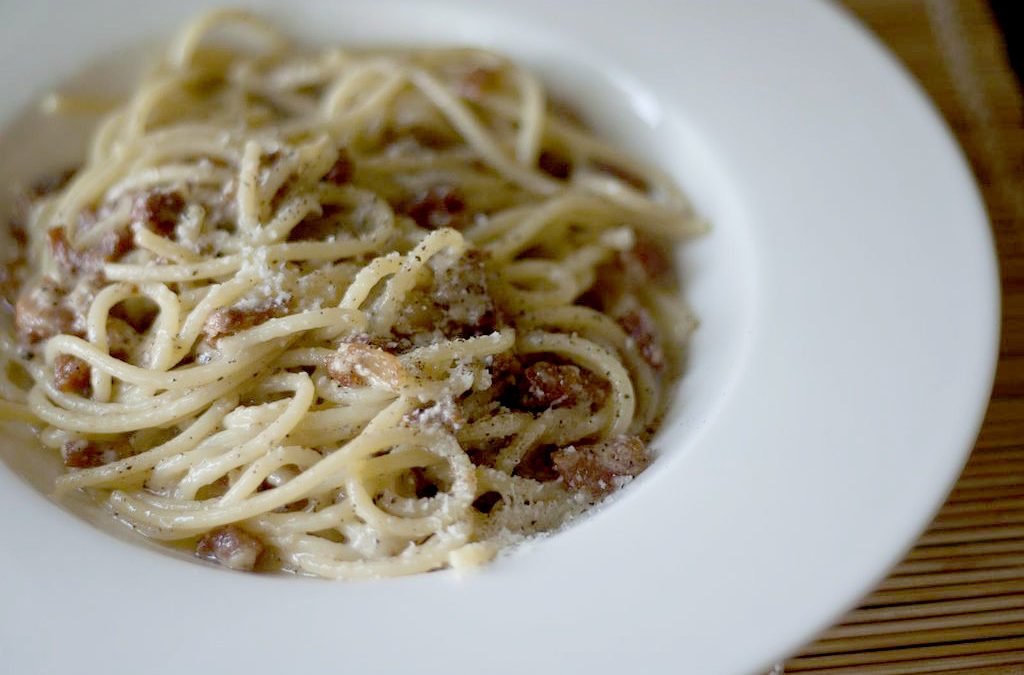Gricia is a very famous pasta dish from Latium. It’s the perfect combination for those who love Carbonara and Cacio e Pepe too. In fact it is considered a mix of the two. There are many versions, even one with tomato sauce, then called Amatriciana.
Origins
The origin of Gricia is similar to the Cacio e Pepe, it dates back to the same period, when shepherds from the city of Amatrice brought some food with them during grazing: grease, pasta, pecorino and pepper and some of them used to bring guanciale or pancetta too. Why? Because all of these ingredients would have helped them through their journey: pepper was used to fight the cold and pasta and meat were crucial survival nutrients, necessary for the wellbeing of the shepherds.
Visualizza questo post su Instagram
Name
The name “Gricia” has two origins: one legend tells that Gricia comes from the Gresciano area, near Amatrice. The other legend tells that the name comes from the word ‘grici’: a category of bread and food retailers . With the term ‘griscium’ in Rome they referred to the apron used by bakers during baking to protect themselves from the flour. Gricia is considered to be the grandmother (pasta is a feminine word in Italian) of the Amatriciana: a variation of it, with tomato sauce. It takes the name directly from Amatrice.
Visualizza questo post su Instagram
The recipe of Gricia goes on with a mix of the ingredients of carbonara and cacio e pepe: long pasta is preferred, guanciale, pecorino, salt, pepper and oil. For the type of pasta you can choose from spaghetti, bucatini etc.. or alternatively choose the shorter ones. If you prefer instead the variation with tomato sauce you can add it and create a tasty Amatriciana.
Visualizza questo post su Instagram
Have fun cooking Gricia at home!
Luca Nebuloni from Milan, Italy, CC BY 2.0, via Wikimedia Commons

